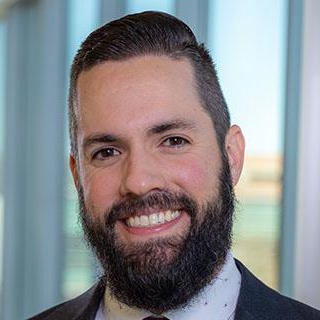For some time, the standard medical recommendation and treatment plan for a teen athlete who suffered a concussion was to sit in a dark room and do as little as possible until symptoms subsided.
However, things have changed over the past decade. With updated research, doctors now know that the best path to recovery after a concussion is regular exercise at a level that does not make symptoms worse, but the exact intensity, frequency, and duration of exercise that leads to the best results remains unknown. That’s where David Howell, PhD, assistant professor of orthopedics at the University of Colorado School of Medicine, comes in.
Supported by a $3.3 million R01 grant from the National Institutes of Health, Howell has devised a research study to see if a high-dose exercise program, initiated within 14 days of concussion, results in faster symptom resolution, improved physiological function, and reduced secondary effects from a concussion, such as anxiety and depression.
“One of the things we want to answer with this study is, is it better to do more frequent exercise that is shorter in duration, more duration with less frequency, or is total volume all that matters?” says Howell, lead researcher for sports medicine at Children’s Hospital Colorado. “If I do one long run of 20 miles a month, I'm going to have a very different physiological response than somebody else who runs one mile a day for 20 days. That's the dosage element of what we're trying to understand through this work.”
Measuring oxygenation and inflammation
Currently, Howell says, many doctors will simply tell their patients to do some physical activity that does not worsen their symptoms. Or they’ll ask concussed patients to do an exercise test, increasing resistance until symptoms are felt. Exercise is then prescribed at level just below the peak intensity, typically for around 100 minutes a week (e.g., 5 days a week for 20 minutes a day).
In the R01 study, one group of patients will remain at that standard-of-care level (physical activity at a level below symptom worsening), while the other group will receive an individualized exercise prescription at an intensity level below where their symptoms worsen, but for a longer duration of time. Wearable devices will help the researchers track how much exercise participants are doing. Lab assessments will help them understand how much oxygen is being delivered to the brain during exercise, and blood tests will measure biomarkers for inflammation, which Howell theorizes is a key element in concussion symptoms.
“Some of the science that we’re adding to this is the concept of inflammation and cerebrovascular regulation,” he says. “When you injure your brain, you have a disrupted ability to control how well energy is delivered to the brain. You need more energy in your brain to repair your brain, but you have a reduced ability to deliver that energy. We’re trying to understand what those mechanisms are that are helping people to start to feel better sooner as exercised is increased.”
Addressing barriers and secondary sequelae
During the five-year project, Howell and his partners at Boston Children’s Hospital hope to enroll and follow 220 teen athletes with concussions to take part in the randomized study. In addition to the effects of high-dose exercise on recovery, the researchers also plan to look at barriers that keep patients from starting the regimen in the first place.
“Another thing we want to understand is, if you're not doing the exercise, why aren't you?” he says. “Is it that you don't have the equipment? You don't feel good? You just don't want to? You don’t have the time? Those answers will help us set these subjects up for success and help inform clinician recommendations in the future.”
Another aim of the research is to find out if exercise can prevent the development of “secondary sequelae” from a concussion — secondary effects such as depression, anxiety, sleep problems, academic problems, or fear of re-injury.
“After concussion, because of the effects of the injury, a lot of times people develop these secondary conditions,” Howell says. “We're going to look at, in addition to symptom-based, physiological recovery, can the exercise help to reduce the incidence in the development of some of these other things?”
Those results, Howell says, could encourage clinicians to recommend the early exercise treatment especially for those patients with a history of anxiety or sleep problems.
Results offer reassurance
Howell knows that asking someone with a concussion to immediately jump into a high-dose exercise program may seem counterintuitive to some, which is why he hopes the results of his study will reassure parents and coaches that the protocol does lead to faster recovery and fewer secondary effects.
“This will be the largest trial to date to be able to say, ‘OK, we are very confident that for people who are this age, in this population, these are the guidelines you should adhere to,’” Howell says. “At the end of the day, all we can do is advise, but this will be really valuable for doctors, coaches, and parents to give them some confidence that this is going to help.”




